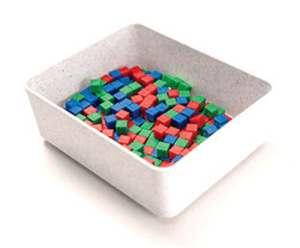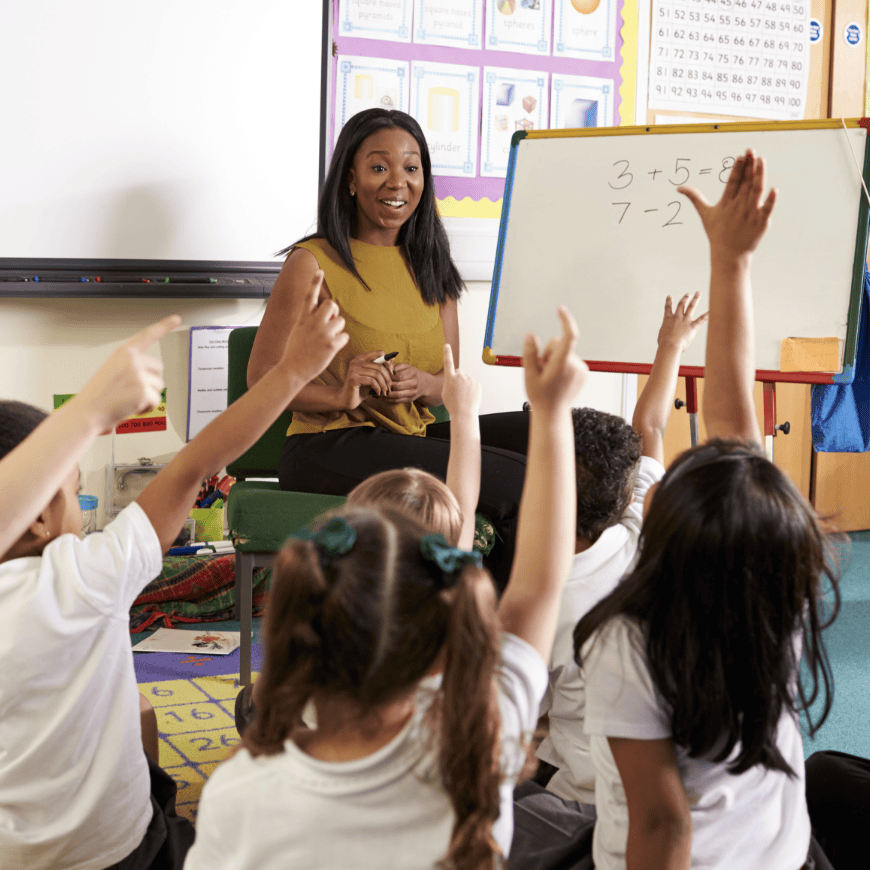Posted in: Aha! Blog > Eureka Math Blog > Implementation Support > Four Tips for Managing Eureka Math Materials
 Eureka Math lessons typically move from concrete to pictorial to symbolic representations, giving students greater levels of hands-on experience when they first learn new concepts or need extra support. As a teacher, you can create opportunities for students to concretely build conceptual understanding with new topics. One goal may be to elevate the math through the materials used in the classroom. But how do you manage all the tools, manipulatives, and materials you want your students to use?
Eureka Math lessons typically move from concrete to pictorial to symbolic representations, giving students greater levels of hands-on experience when they first learn new concepts or need extra support. As a teacher, you can create opportunities for students to concretely build conceptual understanding with new topics. One goal may be to elevate the math through the materials used in the classroom. But how do you manage all the tools, manipulatives, and materials you want your students to use?
First, know which materials you need. You can find module-specific lists of materials in your Teacher Edition, with lesson-specific materials listed at the beginning of each lesson. For a full list of the materials used at each grade level, consult the Materials Lists in the Eureka Math Teacher Resource Pack. Initially, you may have questions about the best and most efficient ways to use the materials. Here are some tips to help you get started.
- Think of ways for students to create ownership of their materials.
Students need easy access to frequently used items such as counters, linking cubes, place value disks, and straightedges. Consider creating a math toolkit for each student or table group. Pencil boxes and large zippered bags are common, but you can use any container to make a toolkit. Fill toolkits with frequently used materials right away or have students add materials to their toolkits over time. If students know what is in their toolkits and how to use the tools appropriately, they are far more likely to select tools strategically and use them independently.
For less frequently used materials, assign a student to be the math materials manager. The math materials manager distributes the materials, collects them, and puts them away properly. For instance, when a lesson calls for each student to have a set of straws, the math materials manager can be responsible for counting the straws, distributing the correct number to classmates, and making sure the straws are returned quickly and neatly. This classroom responsibility can be assigned to different students periodically.
- Save money and effort by making simple substitutions and intentional instructional choices.
The materials listed in each Eureka Math lesson are chosen intentionally and serve a specific purpose. However, use your professional judgment to make decisions regarding the materials used in your classroom. Always consider the purpose the materials serve, the lesson objectives, and the value of the concrete experience for your students. Honor what you know about your students and their needs.
One common decision teachers make is substituting materials. For example, a lesson might call for 240 dried beans—half painted red and the other half painted white. If access to these materials or preparation time are barriers to success, consider substituting a different item in two colors for the beans.
Another decision teachers make is to change the quantities of certain materials used in a lesson. For instance, if the materials list in a lesson about counting calls for three different types of objects, you might consider whether two object types are sufficient to meet the lesson objective. Likewise, if you don’t have enough materials for each student, think about whether it makes sense to modify the use of materials in some lessons. You could have students work collaboratively and share the materials, or you could use one set of materials to model the activity for the students.
As you make these kinds of decisions about materials, make sure that you are supporting the lesson outcomes. For example, consider the case of using base-ten blocks instead of place value disks. One purpose of place value disks is to move students to a less concrete mathematical representation. The disks can serve as a tool to help students as they build out their place value chart beyond the thousands place. In that situation, substituting in base-ten blocks would frustrate the goal because the blocks do not take students beyond the thousands place.
You should feel comfortable making good instructional decisions with materials as long as you keep the lesson goals and student outcomes in mind.
- Let students help create materials.
No teacher wants to spend the entire summer or weekend creating materials that students only use briefly. Instead, consider having your students help create the materials. It can be a fun experience and one that gives students greater ownership over their math tools. For example, if a lesson calls for 10-bead bracelets, think about providing each student with a chenille stem and beads so they can create their own.
- Create a materials library.
A materials library is a great way to store items that students don’t need frequently, such as pattern blocks, tangrams, and base-ten blocks. This type of library helps you keep track of materials so you can reuse them multiple times or share them with other teachers. This may enable you to buy fewer supplies over the years and to avoid repeatedly creating the same materials. A materials library can be simple. Create clearly labeled files, zippered plastic bags, or plastic containers for different materials and store them so you can easily find what you need when you need it.
Submit the Form to Print

Carrie Thornton
Carrie Thornton is a Eureka Math Implementation Leader. She is a former 4th grade teacher and new teacher mentor from Bethel School District in Washington state.
Topics: Implementation Support











